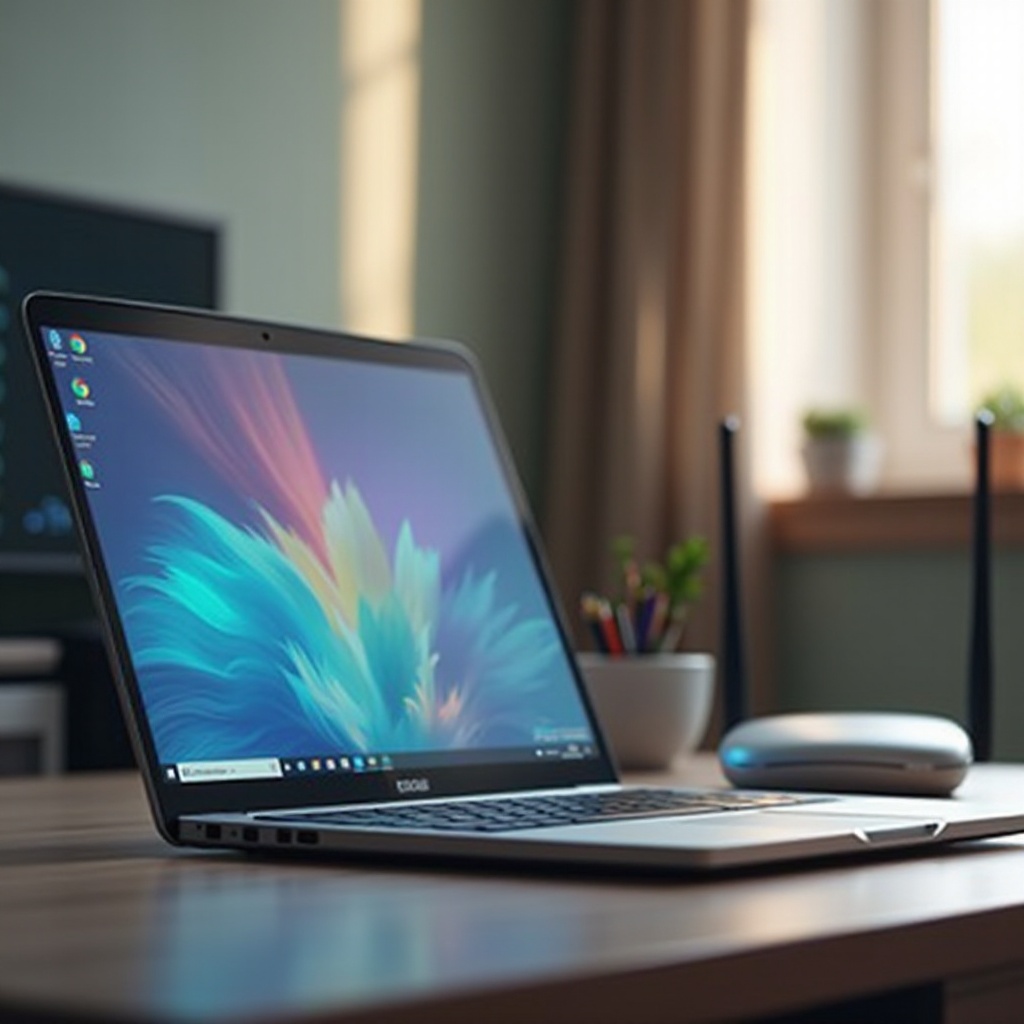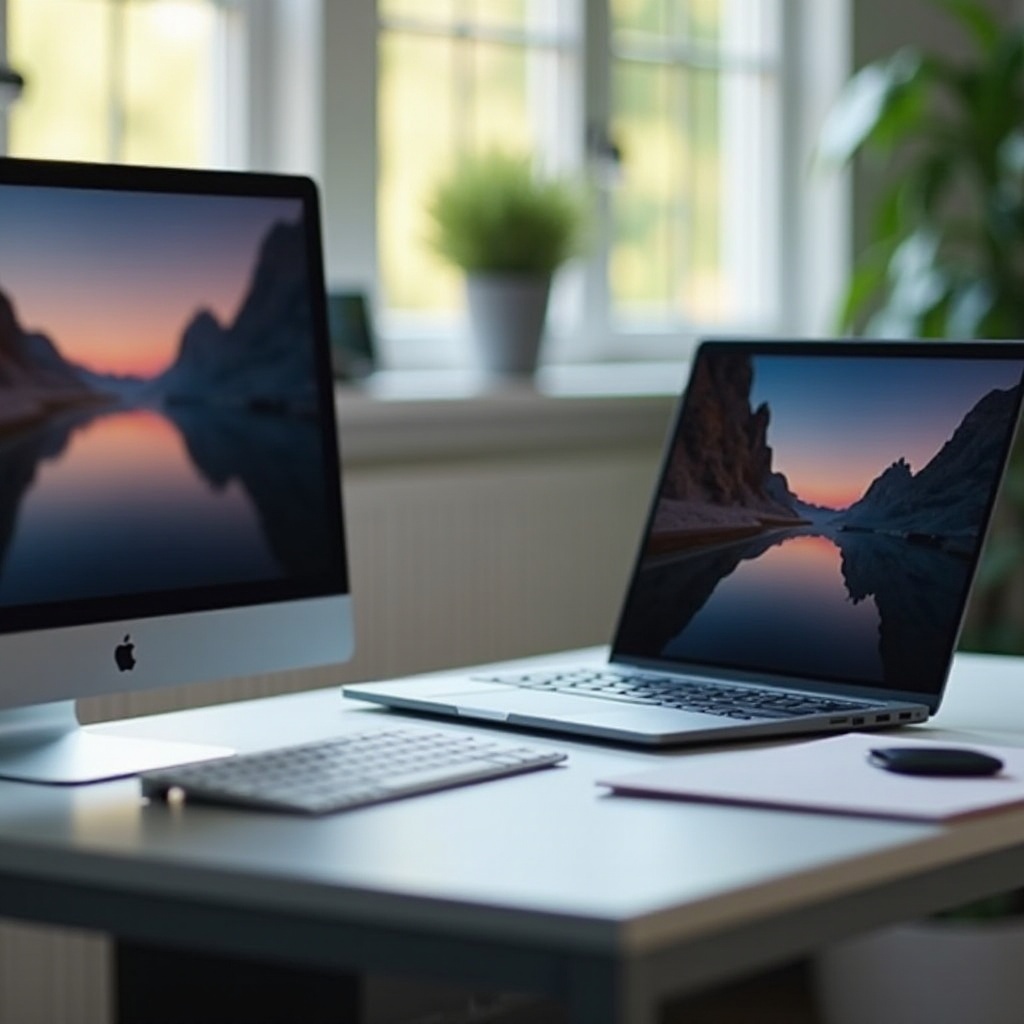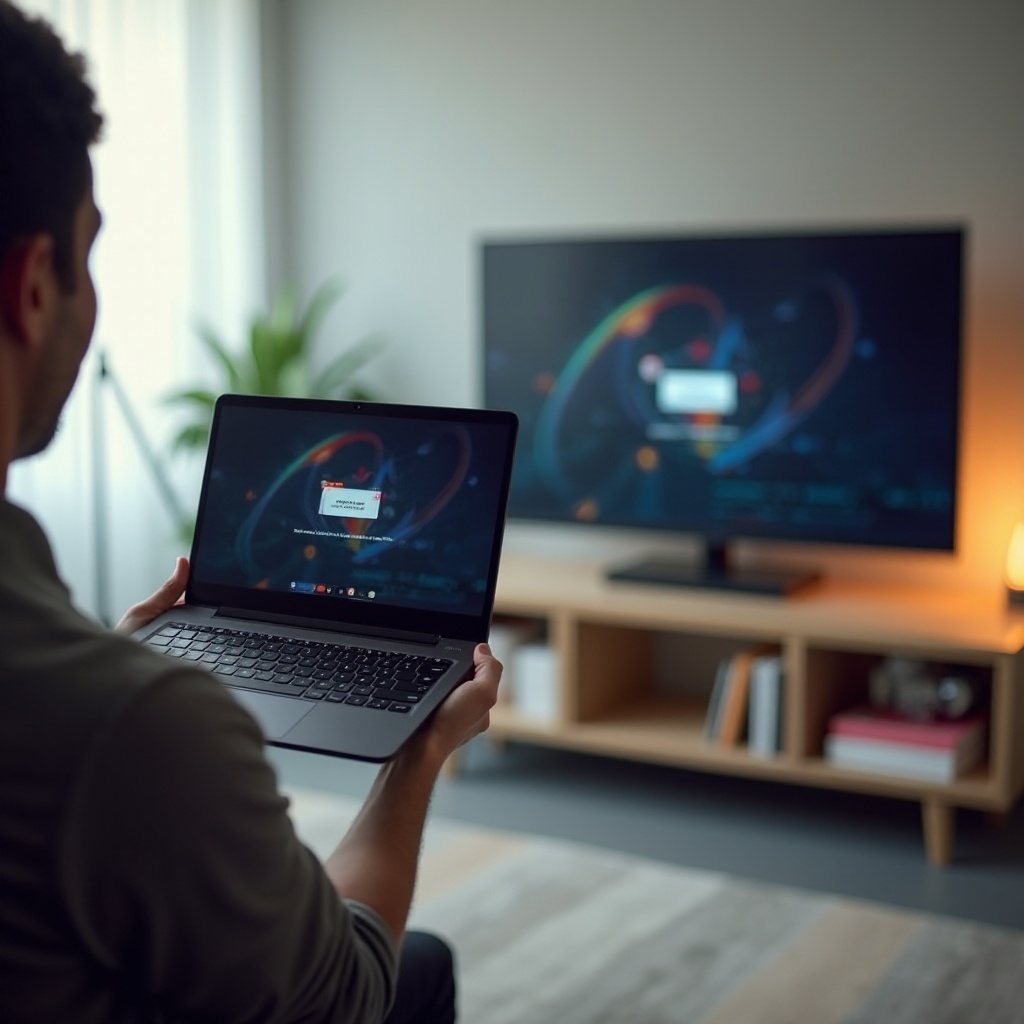Introduction
Casting your Chromebook screen through WiFi can enhance your viewing experience and make presentations more dynamic. Whether you’re watching your favorite shows on a bigger screen or giving a presentation to a large audience, Chromebook’s WiFi casting feature is an invaluable tool.

What You Need to Cast Your Chromebook Screen
Before diving into the casting process, it is important to gather the essentials. First, ensure that your Chromebook is up-to-date with the latest software. You’ll also need a compatible device to cast to, such as a smart TV, an external monitor, or a projector.
To guarantee a smooth connection, a stable WiFi network is crucial. Both your Chromebook and the receiving device should be on the same WiFi network. Having these prerequisites in place will make the casting process seamless and efficient.

Setting Up Your Chromebook for WiFi Casting
Enabling Wireless Display
To start, make sure your Chromebook’s wireless display feature is enabled. Navigate to the system settings and select ‘Device.’ Under ‘Displays,’ you should see an option for ‘Wireless display.’ Toggle it on to enable. This feature allows your Chromebook to search for nearby casting devices.
Connecting to a Cast Device
Once the wireless display is enabled, connect your Chromebook to the desired cast device. Click on the time in the bottom right corner of your screen to open the status area. Select the ‘Cast devices available’ option; your Chromebook will start searching for compatible devices.
When your target device appears, click on it to connect. Wait for a few moments while the two devices sync. Once connected, your Chromebook screen should be mirrored on the target device.
Step-by-Step Guide to Casting to a Smart TV
With the groundwork laid, let’s dive into the specifics of casting to various devices, starting with smart TVs.
Verifying TV Compatibility
First, confirm that your smart TV supports screen casting. Many modern televisions come equipped with either Chromecast or Miracast, both of which are compatible with Chromebook casting. Refer to your TV’s user manual to ensure compatibility.
Initial Setup and Configuration
- Turn on Your Smart TV: Ensure it is connected to the same WiFi network as your Chromebook.
- Navigate to the TV’s Casting Menu: This might be labeled as ‘Screen Share,’ ‘Casting,’ or ‘Mirroring’ depending on the TV brand.
- Enable Casting on Your TV: Follow the on-screen instructions to set up screen casting.
Troubleshooting Common Issues
If your devices aren’t connecting:
– Check WiFi Connection: Ensure both devices are connected to the same WiFi network.
– Restart Devices: Sometimes simply restarting your Chromebook and TV can resolve connectivity issues.
– Update Firmware: Make sure both your Chromebook and TV firmware are up-to-date.
– Disable VPNs: VPN connections can interfere with casting.

Casting Your Chromebook to External Monitors and Projectors
Casting to external monitors and projectors follows a slightly different process but remains straightforward.
Wireless Display Adapters
If your external monitor or projector lacks built-in casting support, consider using a wireless display adapter. Devices like Microsoft Wireless Display Adapter or Chromecast can facilitate the connection. Plug the adapter into the HDMI port of the monitor or projector and ensure it is connected to the same WiFi network as your Chromebook.
Setting Up Miracast or Other Technologies
For monitors and projectors that support Miracast:
1. Ensure that the Device is in Miracast Mode: This might require navigating to the correct input or setting on the monitor or projector.
2. Cast from Chromebook: Follow similar steps as casting to a TV. Open the status area, find the cast device, and select it to connect.
Best Practices for Smooth Casting Experience
To make sure you have the best possible experience when casting your screen, consider the following tips:
Optimizing WiFi Connectivity
A strong and stable WiFi connection is critical. Place your router in a central location and minimize obstructions between your devices. Consider using a dual-band router to reduce interference and increase bandwidth.
Adjusting Display Settings
Adjust the display settings on your Chromebook for the best casting experience. Go to ‘Settings,’ navigate to ‘Device,’ and then ‘Displays.’ Adjust the resolution and orientation as needed to match the screen you are casting to.
Conclusion
Casting your Chromebook screen through WiFi unlocks a world of convenience and enhances your digital experiences. By following this guide, you should be able to cast to a variety of devices with ease and enjoy a smooth, seamless connection.
Frequently Asked Questions
Can I cast my Chromebook screen without an internet connection?
No, both the Chromebook and the target device need to be connected to the same WiFi network for casting to work effectively.
What should I do if my screen casting is lagging?
Ensure that both devices have strong WiFi connections. Reducing other network traffic and closing unnecessary applications can also help.
Are there any security risks associated with screen casting?
Screen casting is generally secure as long as you are on a trusted WiFi network. Avoid casting sensitive information on public or unsecured networks.